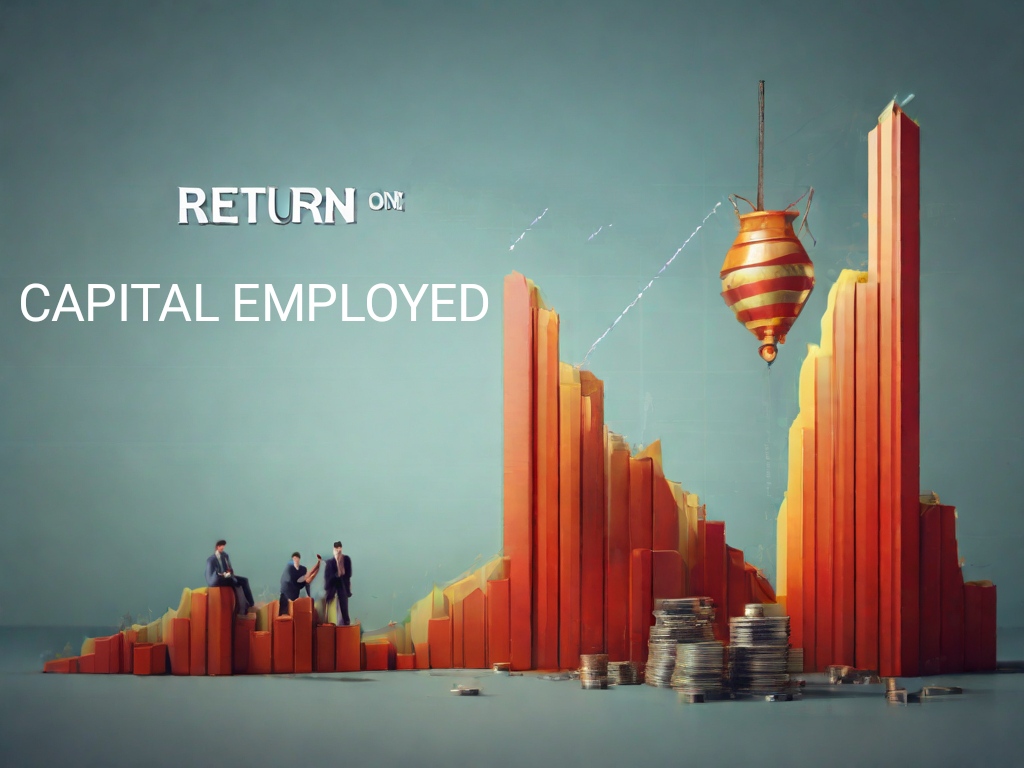
Introduction:
In the labyrinth of financial metrics used to evaluate the fitness and ability of a company, one metric stands out as a beacon of insight: Return on Capital Employed (ROCE). ROCE, frequently hailed because the “golden ratio” of economic analysis, presents traders with a comprehensive view of a organisation’s performance in generating earnings from its capital investments. In this newsletter, we delve deep into the significance of ROCE in inventory evaluation, unraveling its significance, interpretation, and implications for buyers in search of to make informed decisions.

Understanding ROCE:
ROCE, in its essence, measures a business enterprise’s capacity to generate earnings from the capital it employs. It is calculated with the aid of dividing a organisation’s earnings earlier than hobby and taxes (EBIT) by way of its capital employed. Capital hired consists of both equity and debt capital invested in the business, making ROCE a sturdy indicator of operational performance and capital usage.
Formula: ROCE = EBIT / Capital Employed
The numerator, EBIT, reflects the enterprise’s running income before deducting interest and taxes, presenting a clear picture of its middle profitability. On the opposite hand, the denominator, capital employed, encompasses all budget utilized in the business, inclusive of shareholders’ fairness and lengthy-term debt. By incorporating both debt and fairness, ROCE presents a holistic view of the way correctly a organisation utilizes its sources to generate returns.

Importance of ROCE in Stock Analysis:
Efficiency Benchmarking: ROCE serves as a benchmark for evaluating the efficiency of various groups in the same industry or throughout industries. A higher ROCE indicates advanced efficiency in utilizing capital to generate profits, signaling a aggressive benefit and ability for sustainable increase.
Capital Allocation Analysis: Effective capital allocation is paramount for maximizing shareholder cost. ROCE allows investors examine control’s allocation decisions by assessing the returns generated from investments in new initiatives, acquisitions, or expansions. A consistently high ROCE signifies prudent capital allocation techniques, while a declining ROCE may additionally improve concerns about inefficient capital deployment.
Profitability Assessment: ROCE enhances conventional profitability metrics consisting of go back on equity (ROE) by using incorporating the impact of debt financing. While ROE focuses entirely on fairness traders’ returns, ROCE offers a comprehensive view by way of considering both equity and debt companies. This is especially relevant in industries with big capital intensity or various capital systems.
Risk Management: Analyzing ROCE permits buyers to gauge the danger-return tradeoff related to a organisation’s operations. A excessive ROCE coupled with prudent debt management indicates a positive risk profile, suggesting the company can generate robust returns without excessive financial leverage. Conversely, a low or declining ROCE may signal operational inefficiencies, heightened hazard, or capital misallocation, warranting similarly investigation.

Interpreting ROCE:
While ROCE serves as a valuable tool in stock analysis, its interpretation requires contextual understanding and consideration of industry dynamics, business lifecycle stage, and capital structure. Here are key factors to consider when interpreting ROCE:
- Industry Norms: Different industries have varying capital requirements and operating dynamics, influencing their typical ROCE ranges. It’s essential to benchmark a company’s ROCE against industry peers to assess its relative performance and competitive position.
- Historical Trends: Analyzing ROCE trends over multiple periods provides insights into a company’s operational consistency and long-term sustainability. Consistent improvement or stability in ROCE indicates operational efficiency and effective capital deployment, while fluctuations or downward trends may indicate underlying challenges or strategic shifts.
- Capital Structure: ROCE is influenced by a company’s capital structure, with higher leverage potentially boosting returns but also increasing financial risk. Comparing ROCE across companies with similar capital structures helps mitigate the impact of leverage on performance evaluation.
- Economic Cycle: Economic conditions can significantly impact a company’s ROCE, with downturns often leading to temporary declines due to lower demand, pricing pressure, or investment postponements. Evaluating ROCE within the context of the broader economic cycle provides a more nuanced understanding of its implications.

Case Studies:
To illustrate the practical application of ROCE in stock analysis, let’s examine two hypothetical companies operating in the retail and technology sectors:
- Retail Company X: Company X operates in the highly competitive retail sector, with thin profit margins and significant capital investments in stores and inventory. Despite facing industry headwinds, Company X maintains a steady ROCE of 15%, outperforming its peers with more efficient capital utilization and effective cost management. Investors view Company X favorably due to its resilience and ability to sustain profitability amidst industry challenges.
- Technology Company Y: Company Y operates in the rapidly evolving technology sector, characterized by innovation, high growth potential, and capital-intensive R&D investments. While Company Y boasts a commendable ROCE of 20%, surpassing industry benchmarks, its aggressive expansion strategy and escalating debt levels raise concerns about long-term sustainability. Investors scrutinize Company Y’s capital allocation decisions and debt management practices to assess its risk-return profile and growth prospects.

Conclusion:
ROCE stands as a fundamental metric in stock analysis, offering investors valuable insights into a company’s operational efficiency, capital allocation prowess, and risk-return dynamics. By understanding the significance of ROCE and its implications for investment decisions, investors can navigate the complex landscape of financial markets with greater clarity and confidence. As the cornerstone of informed decision-making, ROCE empowers investors to unlock the full potential of their investment portfolios and embark on a path to sustainable wealth creation.
